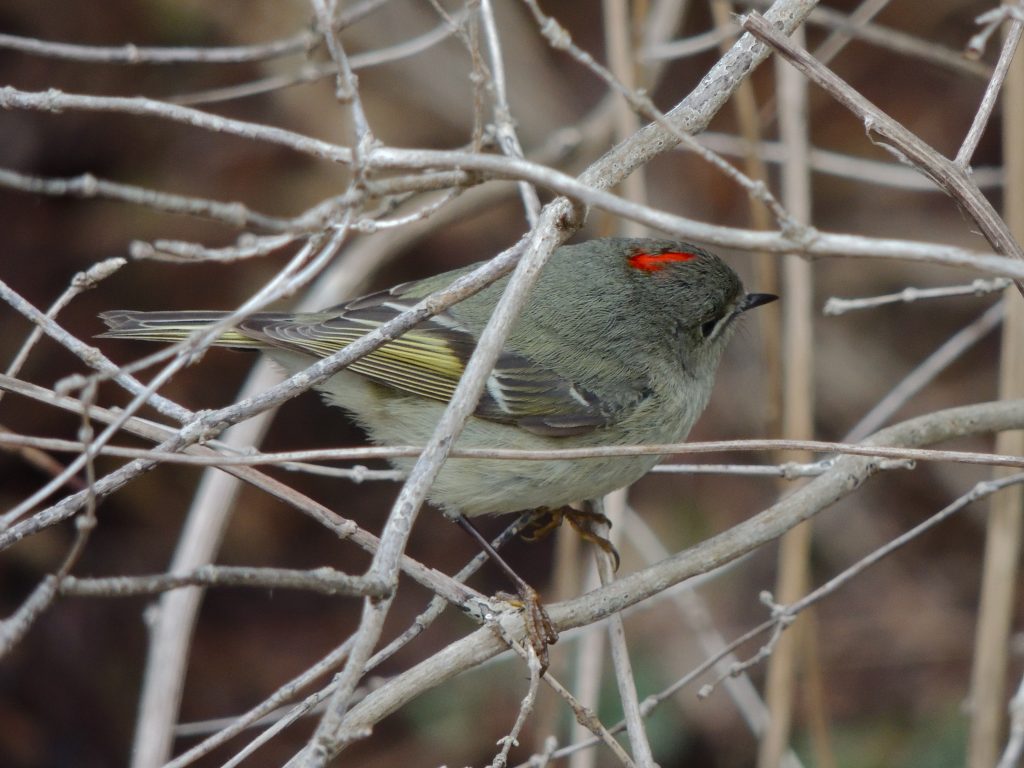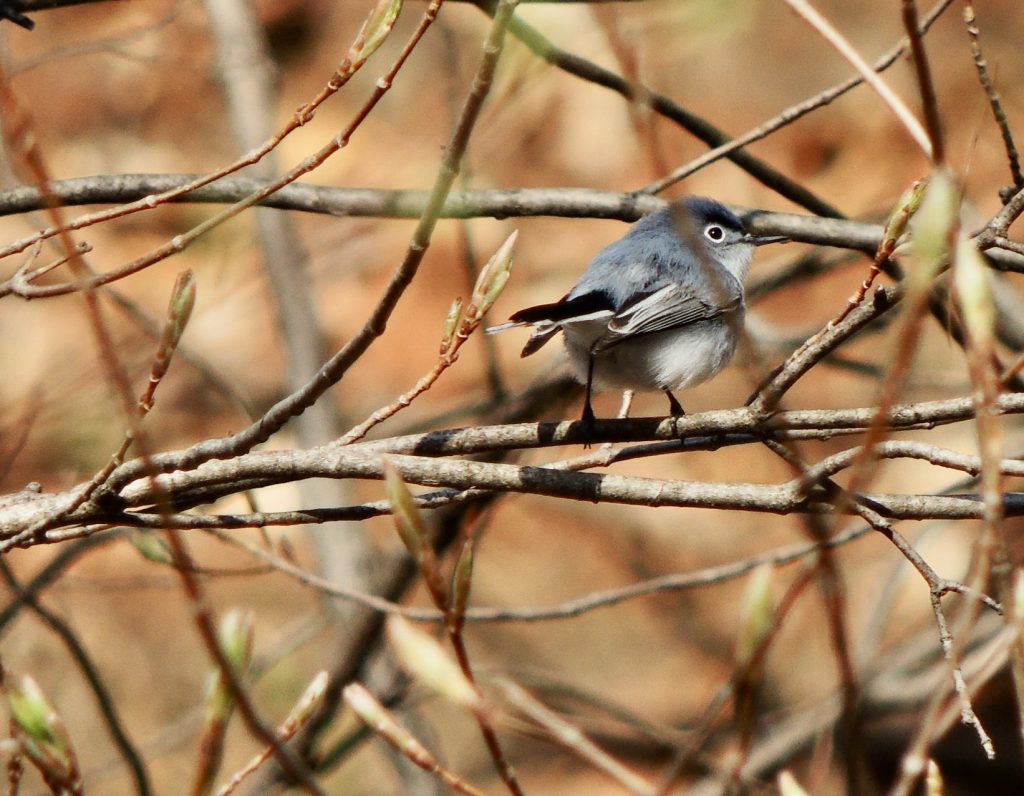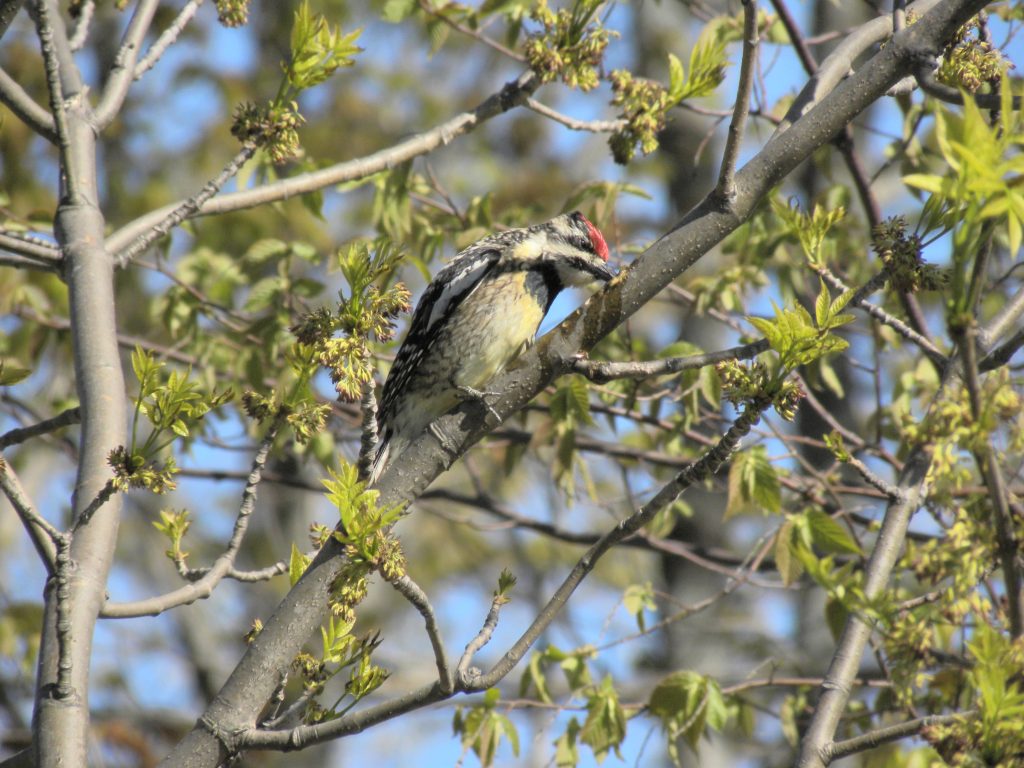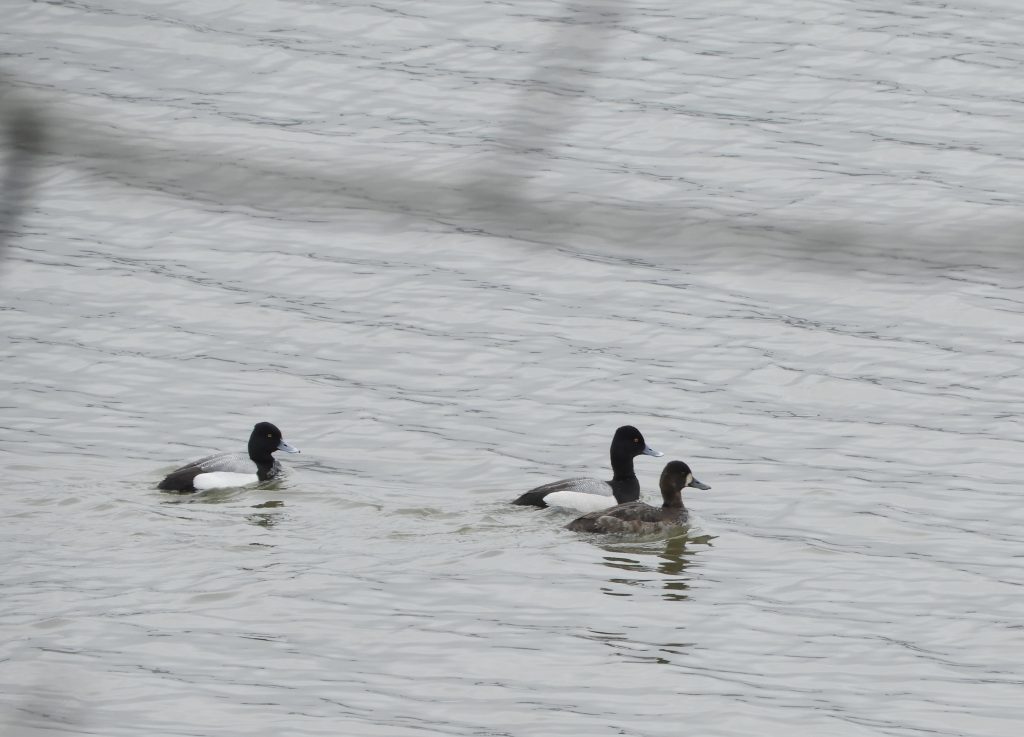 Princess Point, Hamilton. ON. April 20, 2024. Many decades ago as a recent immigrant, I was often at a loss to identify so many new-to-me birds. I’d been a casual and ill-equipped birder in my English youth but getting settled in Canada had led to paying much more attention to birds, as well as getting married, paying rent and other signs of adulthood of course. I often think back to one spring day and being confounded by little birds that looked for all the world like warblers yet didn’t match anything in my field guide. They were small, olive drab, showed a pale wing bar, and flitted and foraged endlessly. I thumbed back and forth through Peterson’s warbler illustrations. Then, for a just moment, one of them showed a bright crimson crown-patch. Now I had something I could hold on to. I was familiar with the Goldcrests and Firecrests of Europe and these little things were their lookalikes, the closely related Ruby-crowned Kinglets!
Princess Point, Hamilton. ON. April 20, 2024. Many decades ago as a recent immigrant, I was often at a loss to identify so many new-to-me birds. I’d been a casual and ill-equipped birder in my English youth but getting settled in Canada had led to paying much more attention to birds, as well as getting married, paying rent and other signs of adulthood of course. I often think back to one spring day and being confounded by little birds that looked for all the world like warblers yet didn’t match anything in my field guide. They were small, olive drab, showed a pale wing bar, and flitted and foraged endlessly. I thumbed back and forth through Peterson’s warbler illustrations. Then, for a just moment, one of them showed a bright crimson crown-patch. Now I had something I could hold on to. I was familiar with the Goldcrests and Firecrests of Europe and these little things were their lookalikes, the closely related Ruby-crowned Kinglets!

Today was a Ruby-crowned Kinglet day, I think there must have been an influx overnight, it happens when conditions are right and millions of spring migrants take flight. Everywhere on our transect we could hear Ruby-crowned Kinglets singing. Their song is a drawn-out tumble of quite loud notes, well described in the Sibley guide as si si sisi berr berr pudi pudi pudi see. Kinglets could have been my Birds of the Day had it not been for my young companion spotting a beautiful male Blue-gray Gnatcatcher not 3 meters from us. It stayed around long enough turning, posturing, flitting and generally behaving to become a textbook sighting. It was My Bird of the Day displacing the kinglets.

The gnatcatcher must have arrived on that same overnight wave as the kinglets, and many Yellow-rumped Warblers and White-throated Sparrows. The photo in the header is today’s gnatcatcher, a little out of focus but appropriately with a gnat in its bill. The one below is from nine years ago and might be helpful had it not been for all those branches.

 Princess Point, Hamilton. ON. April 13, 2024. Caught by conflicting promises I tried to squeeze in today’s transect by starting at 7:30 but rain put paid to that. You can’t realistically blame the weather; it’s always been around but it sure complicated things and I found myself having to start an hour later and in Force 6 winds. Benignly labeled a Strong Breeze, Force 6 is ‘Large branches in motion; whistling heard in telegraph wires; umbrellas used with difficulty.” To all of that at six degrees C. I can only add that it made my eyes water, nose drip and knuckles stiffen.
Princess Point, Hamilton. ON. April 13, 2024. Caught by conflicting promises I tried to squeeze in today’s transect by starting at 7:30 but rain put paid to that. You can’t realistically blame the weather; it’s always been around but it sure complicated things and I found myself having to start an hour later and in Force 6 winds. Benignly labeled a Strong Breeze, Force 6 is ‘Large branches in motion; whistling heard in telegraph wires; umbrellas used with difficulty.” To all of that at six degrees C. I can only add that it made my eyes water, nose drip and knuckles stiffen.


 Princess Point, Hamilton. ON. April 10, 2024. At the right time and place you can watch migration happen, literally on the fly, but most of it goes unseen. Overnight they move, flying hundreds of miles while you sleep. They’re there to greet you next morning; it happened to me today, the greeting that is not the flying.
Princess Point, Hamilton. ON. April 10, 2024. At the right time and place you can watch migration happen, literally on the fly, but most of it goes unseen. Overnight they move, flying hundreds of miles while you sleep. They’re there to greet you next morning; it happened to me today, the greeting that is not the flying.

 Princess Point, Hamilton. ON. April 4, 2024. I had forgotten how much fun the first big deluge of spring birds can be. I’ve been away for the best part of a month so had missed most of the March trickle, an exciting but oh-so-gradual reappearance of things like Red-winged Blackbirds and Killdeer. That trickle becomes a weather-regulated flow, flow becomes a stream and then, weather-be-damned, it’s all about April days like this.
Princess Point, Hamilton. ON. April 4, 2024. I had forgotten how much fun the first big deluge of spring birds can be. I’ve been away for the best part of a month so had missed most of the March trickle, an exciting but oh-so-gradual reappearance of things like Red-winged Blackbirds and Killdeer. That trickle becomes a weather-regulated flow, flow becomes a stream and then, weather-be-damned, it’s all about April days like this.


 Horta, Faial, Azores Is. Portugal. March 29 2024.
Horta, Faial, Azores Is. Portugal. March 29 2024. 